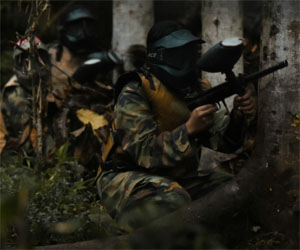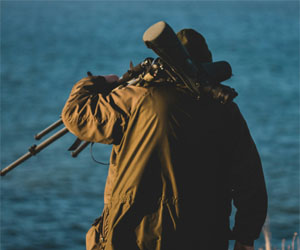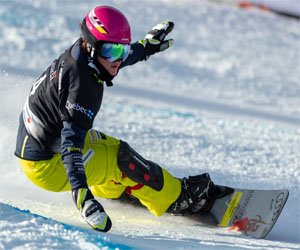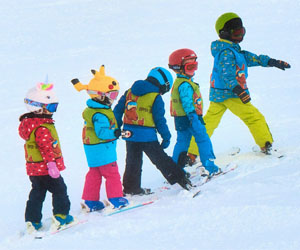


Injury Prevention Techniques For Athletes

In the world of sports and athletics, injuries are an unfortunate but common occurrence. Athletes at all levels, from amateurs to professionals, can be sidelined by injuries, impacting their performance and long-term well-being. However, there are effective injury prevention techniques that athletes can employ to safeguard themselves and stay in the game. In this article, we'll explore some key strategies for injury prevention.
1. Proper Warm-Up And Cool-Down: One of the most fundamental injury prevention techniques is the warm-up and cool-down routine. Warming up prepares your muscles and joints for activity, reducing the risk of strains and sprains. A cool-down helps your body recover and minimizes post-exercise soreness.
2. Strength And Conditioning: Athletes should incorporate strength and conditioning exercises into their training routines. These exercises help build muscle, improve joint stability, and enhance overall body resilience, reducing the risk of injury.
3. Flexibility And Stretching: Flexibility is crucial for preventing injuries. Stretching exercises improve your range of motion, making you less prone to muscle pulls and tears. Dynamic stretching before activity and static stretching after can help.
4. Correct Technique And Form: Proper technique and form are paramount in preventing sports injuries. Inadequate form increases the risk of overuse injuries and acute trauma. Athletes should receive coaching to ensure they perform their sport correctly.
5. Cross-Training: Engaging in multiple sports or activities can reduce the risk of overuse injuries. Cross-training allows different muscle groups to be used, preventing excessive strain on one set of muscles or joints.
6. Equipment Maintenance: Athletes should regularly inspect and maintain their sports equipment. Whether it's a bicycle, running shoes, or protective gear, keeping equipment in good condition reduces the risk of accidents caused by faulty gear.
7. Adequate Rest And Recovery: Overtraining is a common cause of sports injuries. Athletes must prioritize rest and recovery. Sleep, nutrition, and relaxation are all vital components of recovery.
8. Hydration And Nutrition: Dehydration can lead to muscle cramps and decrease your body's ability to regulate temperature. Proper nutrition is equally important, as it provides the necessary fuel for your body to function optimally and recover from physical stress.
9. Injury Awareness: Being aware of your body and recognizing the signs of potential injuries is a crucial part of injury prevention. Athletes should not ignore pain or discomfort, as early intervention can prevent more severe injuries.
10. Consultation With Experts: Professional athletes often have access to sports medicine experts, but amateur athletes can also benefit from their expertise. Seeking advice from sports doctors, physical therapists, and trainers can help in developing a personalized injury prevention plan.
11. Injury Prevention Programs: Many sports offer specific injury prevention programs. These programs focus on exercises and techniques tailored to the sport's unique injury risks. Athletes should take advantage of such resources.
Athletes of all levels can benefit from injury prevention techniques that encompass proper warm-up and cool-down, strength and conditioning, flexibility, technique and form, cross-training, equipment maintenance, rest and recovery, hydration, nutrition, injury awareness, expert consultation, and injury prevention programs. By implementing these strategies, athletes can reduce their risk of injuries and enjoy their sport with greater confidence and longevity. Remember, injury prevention is an integral part of achieving and maintaining athletic success.
The Crucial Role Of Team Dynamics In Paintball
 The Power Of Team Dynamics In Paintball
The Power Of Team Dynamics In Paintball
Team dynamics encompass the interactions and coordination between paintball players. Whether you're a seasoned pro or a novice, the way your team functions can significantly impact your performance and the outcome of the game.
Here's why team dynamics matter:
Strength In Numbers: Paintball is a team sport, and the synergy between teammates is crucial. A well-coordinated team can overcome individual weaknesses, outmaneuver opponents, and achieve victory.
Effective Communication: In paintball, communication is the lifeline of teamwork. Sharing information about enemy positions, plans, and actions helps the team adapt and respond to the evolving situation.
Cover And Support: Teammates can provide cover fire and support, creating opportunities for their allies to advance, reload, or take strategic positions. This teamwork is essential for maintaining control on the battlefield.
Strategic Combinations: Teams can devise strategies that involve various roles, such as snipers, assault players, and defenders, working in tandem to achieve a common goal. Combining these roles strategically is a hallmark of effective team dynamics.
Unity And Morale: A cohesive team fosters unity and high morale, which, in turn, boosts confidence and motivation. This positive atmosphere can lead to better decision-making and performance.
Key Aspects Of Effective Team Dynamics
Communication: Open and clear communication is the cornerstone of effective team dynamics. Players should use radios, hand signals, or verbal cues to convey vital information to their teammates.
Roles And Responsibilities: Define roles within the team based on each player's strengths and preferences. This helps in optimizing the team's performance and allowing players to focus on their specific tasks.
A Delightful Journey Into Nature's Avian Tapestry
 Patience And Observation: At the core of birdwatching is the practice of patience and keen observation. Birdwatchers learn to scan the landscape, often for extended periods, waiting for that fleeting moment when a bird reveals itself. The art lies in the ability to notice subtle details, from the distinctive plumage patterns to the unique behaviors that define each species.
Patience And Observation: At the core of birdwatching is the practice of patience and keen observation. Birdwatchers learn to scan the landscape, often for extended periods, waiting for that fleeting moment when a bird reveals itself. The art lies in the ability to notice subtle details, from the distinctive plumage patterns to the unique behaviors that define each species.
The Language Of Birds: Birdwatching introduces enthusiasts to the intricate language of birds. Through songs, calls, and visual displays, birds communicate with one another, and keen birders become fluent in this avian dialect. They can distinguish between the warning call of a robin and the joyful song of a thrush.
Identification And Expertise: The art of birdwatching involves learning to identify different bird species accurately. This skill requires an understanding of field marks, such as coloration, size, shape, and distinctive features. Birdwatchers often invest in field guides and apps to assist in this endeavor.
Habitat Exploration: Birdwatching is about more than just birds; it's also a journey into the diverse habitats that birds call home. Enthusiasts learn about the ecosystems, plants, and environmental conditions that support avian life. This ecological understanding enhances the appreciation of the interconnectedness of all living things.
 The thrill of the great outdoors is deeply rooted in the elements of unpredictability and challenge. Whether you're hiking steep terrain, navigating winding rivers, or embarking on a multi-day backpacking expedition, the natural world demands adaptability and resilience. These challenges push your limits and offer a sense of accomplishment that's hard to replicate in any other setting.
The thrill of the great outdoors is deeply rooted in the elements of unpredictability and challenge. Whether you're hiking steep terrain, navigating winding rivers, or embarking on a multi-day backpacking expedition, the natural world demands adaptability and resilience. These challenges push your limits and offer a sense of accomplishment that's hard to replicate in any other setting.
Furthermore, the great outdoors is a place where you can reconnect with your most primal instincts. As you explore the wild, you'll find yourself more attuned to your surroundings—the scent of pine in the air, the call of distant birds, and the sensation of the earth beneath your feet. These sensory experiences awaken a deep connection to the environment, one that is often lost in the hustle and bustle of modern life.
The thrill of the great outdoors is also an opportunity to escape the ceaseless digital noise. With limited or no connectivity, you're free from the constant barrage of emails, social media updates, and text messages. Instead, you're left with the quietude of nature, a chance to listen to the wind rustling through the leaves and to engage in conversations that are truly face-to-face.
Another aspect of the thrill of the great outdoors is the sense of awe it inspires. Whether you're standing on the edge of a canyon, watching a waterfall cascade into a pristine pool, or gazing up at a starlit night sky, nature's grandeur is a humbling experience.






Embracing Nature's Hidden Beauty
 The Appeal Of Untouched Landscapes: Untouched landscapes beckon explorers and nature enthusiasts with promises of solitude, serenity, and unparalleled beauty. These are the places where nature's true character reveals itself, unaltered by human intervention. The appeal lies in the raw, unspoiled beauty that stirs the soul and offers a rare opportunity to witness the world as it was meant to be.
The Appeal Of Untouched Landscapes: Untouched landscapes beckon explorers and nature enthusiasts with promises of solitude, serenity, and unparalleled beauty. These are the places where nature's true character reveals itself, unaltered by human intervention. The appeal lies in the raw, unspoiled beauty that stirs the soul and offers a rare opportunity to witness the world as it was meant to be.
Exploration And Adventure: Discovering untouched landscapes often involves exploration and adventure. These areas are typically off the beaten path and may require more effort to reach. Whether it's hiking through dense forests, kayaking down remote rivers, or trekking through rugged terrain, adventurers are rewarded with the thrill of uncovering nature's hidden gems.
Preserving Pristine Environments: For those who undertake the journey of discovering untouched landscapes, there is a sense of responsibility to preserve these pristine environments.
A Journey Of Progress In Skiing And Snowboarding
 The Beginner Stage:
The Beginner Stage:
As a novice, the journey begins with a focus on mastering the fundamental skills. For both skiing and snowboarding, this includes:
1. Equipment Familiarization: You'll become acquainted with your gear, which includes skis, boots, and poles for skiing, or a snowboard and boots for snowboarding. Proper equipment is crucial for safety and performance.
2. Balance And Stance: Finding the right balance and learning how to stand and glide on your equipment is the cornerstone of successful skiing and snowboarding. Beginners often start by practicing on gentle slopes to develop their balance.
3. Turning And Stopping: Learning how to turn and stop effectively is key to controlling your speed and navigating the slopes safely. Novices generally begin with wedge turns in skiing and heel-side edge control in snowboarding.